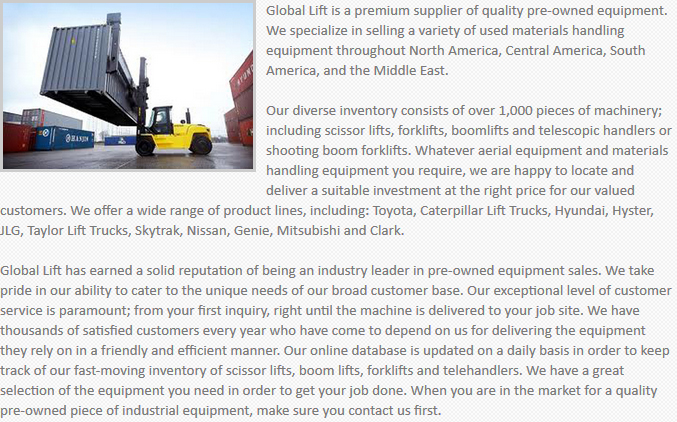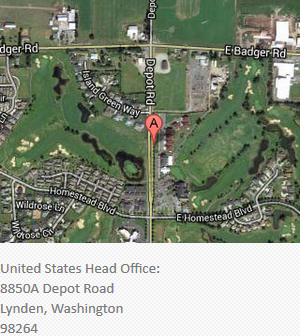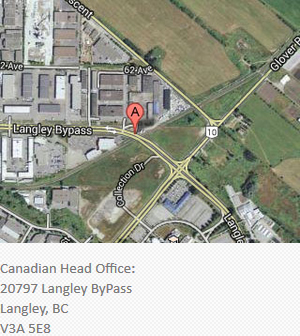About Global Lift Used Forklifts Torrance
Global Lift Torrance - Below are the classes of forklifts which describe the application and fuel option of every type of forklift. Certification is needed for each class of forklift that the operator would be using.
Class 1
These forklifts come with either cushion or pneumatic tires. Pneumatic tires are suggested in dry conditions for outdoor use. The models with cushion tires are designed for indoor surfaces that are smooth. These are electrically powered vehicles which make use of industrial batteries, which make them desirable in closed environments where the quality of air is an issue. Travel and hoist functions are controlled by transistor motor controllers. These are versatile units commonly utilized everywhere from the loading dock to the storage facility.
Class 2
This forklift is recommended for places where narrow aisles have to be negotiated. They are effective at maximizing the use of storage space. Their unique design makes them ideal where speed is required and for small spaces.
Class 3
These are hand-controlled and battery-powered models. Using a steering tiller, the operator could control the lift while standing in front of the truck. The tiller has controls mounted on top and is moved laterally to maneuver the vehicle. The units which have smaller capacity utilize industrial batteries.
A kind of machinery in the material handling industry which can be used to raise and move loads from one place to another is referred to as a forklift. Each and every forklift part has a particular function. Different parts can be utilized to move the load vertically or horizontally.
The forklift mast refers to all the components which lower and lift the load. There are various kinds of masts utilized for lifting loads to various heights: simplex, duplex, triplex and quad.
There are four different ways you could power a forklift: gas, electric, diesel and propane. The battery is situated within the cab underneath the seat. The propane tank is on the rear of the truck. The fuel tank on diesel and gas forklifts is underneath the rear of the truck.
Located in the center of the truck is the forklift cab. This is where the operator sits and accesses all the controls and informational gauges. The steering wheel, gas pedal, lifting controls, tilting controls and brake are all located inside the cab.
Carrying all the largest forklift parts is the frame of the truck. This consists of the counterweights located at the rear which prevents the truck from tipping over when loaded. The frame consists of the overhead guard which protects the operator. The undercarriage holds the axles, wheels and driveshaft.
Forklift certification really helps to be able to make sure that companies are following legislation and regulations. Forklift operators should go through certification prior to being permitted to operate equipment. In areas where certification is not necessary by law, training is useful for individuals seeking industrial work. Certified people are normally selected over other applicants because of this training. Certified forklift drivers are often paid more than those who are not licensed. For companies, having correctly trained forklift operators means better productivity, fewer workplace incidents and less product damage during unloading and loading. When companies adhere to governmental rules by providing training to their staff, they could attain better ratings on their safety inspections, possibly decreasing insurance costs.
Formal forklift training is suggested to help staff and supervisors acquire licensing. It will be easier for those with a forklift certification to look for warehouse jobs because the license will show to prospective employers that the one applying has specific needed skills. A forklift license is recommended because o the benefits to both the employee and the business. A skilled driver saves resources because of less accidents, that means savings on expenses associated with time lost or hospitalization. A licensed forklift driver could be depended upon to work more effectively and efficiently compared to one who is not trained.
The length of a formal forklift training program will vary depending upon numerous things, like for instance the kind of forklift used in the instruction, class size, and experience and aptitude level of trainees. Trainees would be needed to pass a written test and practical exam prior to acquiring the license. Upon successful completion of a formal training program, graduates would be qualified to be able to acquire work in different businesses.

Contact Info

Questions or Comments





